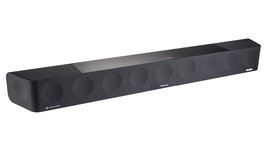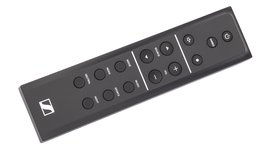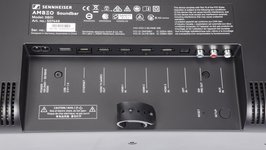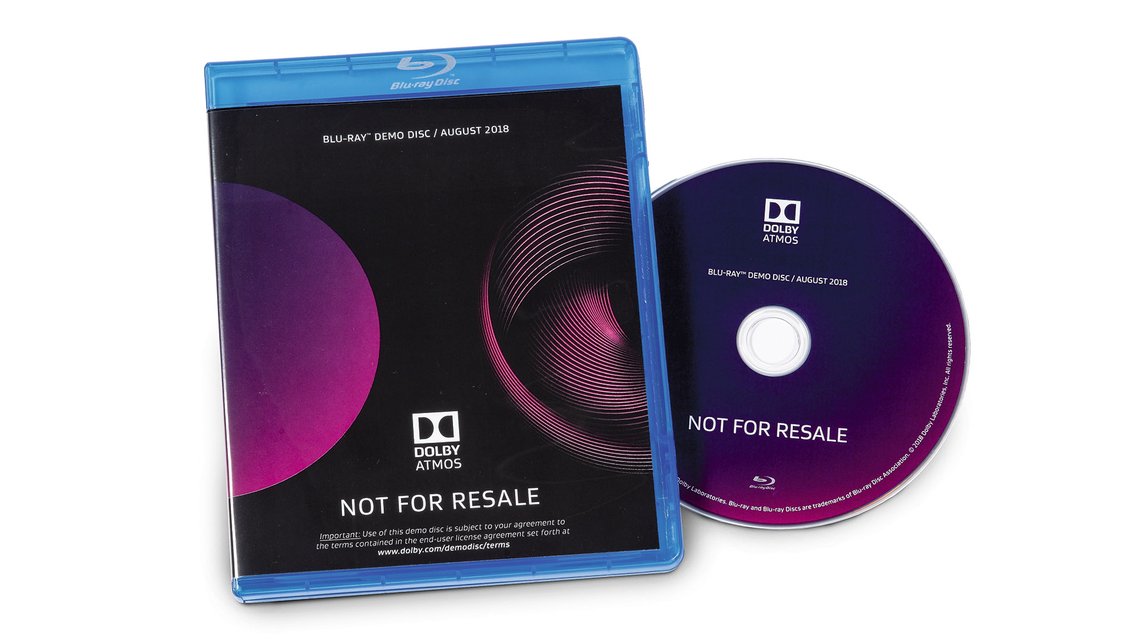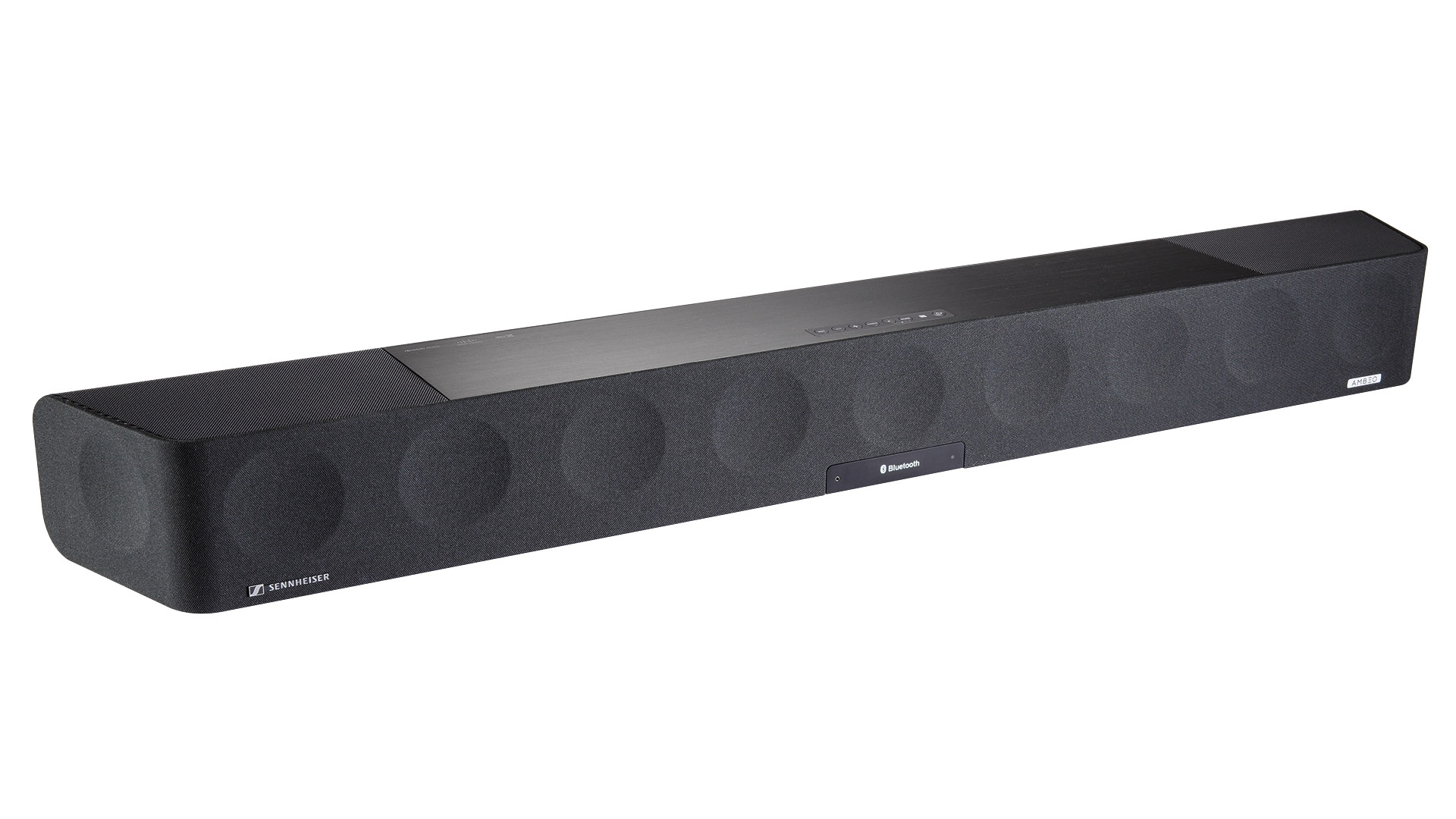
Soundbar Test
Sennheiser Ambeo Soundbar Review
The Genius – With a substantial price of 2,500 Euros, the Sennheiser Ambeo is aiming at the soundbar throne. Thanks to extremely sophisticated 3D technology from Fraunhofer, it's a perfect hit.
A lot has already been written about the new Sennheiser Ambeo soundbar, which is the first ever soundbar of the German manufacturer. That is hardly surprising, given the various superlatives associated with it. Costing a whopping 2,500 euros, it is probably the most highly developed product of this field one could get at the moment. Apparently it was the development of sound formats such as Dolby Atmos, DTS:X or Auro 3D that made the Hanoverians leave their domain of headphones and start their, as far as we know, first loudspeaker project. And what a project it was!
In regard to soundbars, one would usually talk about loudspeakers for TV-applications with an edge length of around one metre and a weight of perhaps three to six kilograms. The Ambeo from the house of Sennheiser however measures just under 130 cm and weighs 18.5 kilograms. We've already mentioned the equally exotic price. So, honestly, what's going on?
3D-Sound
Well, you only get to the top with determination, ambition – and competence. Sennheiser certainly didn't want a "me too" product for the overcrowded multiroom sector, with Bluetooth and a little surround. Instead, here, the developers aimed for nothing less than the best possible three-dimensional sound reproduction for music and films from a single device. Dolby Atmos & Co. came just in time for that. For such a no-compromise-goal, cabinet volume and large drivers are more or less mandatory – so a small case was ruled out per se.
Driven by a powerful Class D block, there are six 10cm bass-midrange drivers and five 25mm Tweeters distributed across the front and sides of the cabinet, with two aditional 9cm full-range drivers facing upward.
Optically, the soundbar naturally fits rather large, wall-mounted flat-screen TVs from 55 inches upwards – the bigger the better – which are also not particularly cheap. In addition, the Sennheiser has to be positioned "open air" because of its upward radiation, so it must not be placed on the lower shelf of a sideboard for example. The ideal position is therefore underneath the TV and, of course, mounted close to the wall. However, the special wall mount, which is indispensable for the 18.5 kilogram heavy Ambeo, is not included with the TV, and costs extra. Well...
However, the Ambeo brings an invaluable feature with it, that we are more used to with A/V receivers. On the other hand, a soundbar certainly means to replace the receiver, so it might be rather fitting to find a microphone supplied with the Sennheiser. Using it, the calibration is completed within mere moments!
Since Sennheiser uses the relief of a room as a kind of projection and reflection surface to realize the different channels from just a single housing, reflectivity and symmetrical positioning are very useful if not necessary.
The four HDMI ports (including ARC for communication with the TV and important for TV streaming services such as Amazon or Netflix) support 4K/HDR/Dolby Vision and DTS:X. LAN, WiFi and optical connections are naturally on board, but there is also an analogue input for a possible stereo source and an output for a subwoofer. The USB port is only for service purposes, making it easier for the technician to install updates anywhere, even without a network. Further Bluetooth 4.2 and Chromecast are supported, with the latter paving the way for all streaming services.
Expensive, but top!
Of course, 2500 Euro is a lot of money for a soundbar. It is heavy and big, too. However the result is also acoustically – and that means both musically and spatially – well above what one could optimistically expect from a multi-channel sound experience in this product category. The 3D illusion realized with the Fraunhofer Institute is extraordinarily successful for the front channels and quite good to the sides. With two- as well as multi-channel the sound is refined, precise, and generally a lot of fun. It impresses with rhythm, temperament but also pressure.
Also one must not forget that the Ambeo's price and space requirements are still much lower than what one would have to invest to achieve something similar – let alone something better – with separate 5.1.4 speakers. This is it, the current queen of soundbars – and beating her is going to be to be a difficult task. Chapeau, Sennheiser, for this performance!
Verdict Sennheiser Ambeo Soundbar
Large soundbar weighing almost 19 kilograms with an easy-to-use microphone system, various presets (film, music, sports, news, neutral) and – thanks to sophisticated Fraunhofer technology – amazingly good 3D-sound reproduction (Dolby Atmos 5.1.4). Also convincing in stereo. The Sennheiser delivers a large and spatial sound image, and the equipment is complete and accordingly very good. At present probably the best soundbar on the market and a good way to upgrade the TV toward home cinema without having to use multiple boxes. Keeping all that in mind the Seenheiser Ambeo is (almost) inexpensive.
Authentic 3D-Sound without many Speakers?
Anyone who has ever experienced well mixed music in Auro 3D or Dolby Atmos via a high-quality 3D system will not forget the experience quickly – not even if they call themselves stereo fan. However, investing in a high-quality home cinema amplifier in addition to one's beloved stereo system, and above all installing various speakers throughout the room including the ceiling (ideally at least nine + subwoofer), is something that most people – understandably – shy away from. It would be downright ingenious if a single soundbar that simulates 360 degree sound via ceiling and wall reflections could replace this elaborate setting.
Unfortunatelly, that is not quite the case - at least in our setting in the STEREO listening room. This is especially true for "acoustic music". "Fracanapa" from the album "Alessandro Quarta Plays Astor Piazzolla", for example, sounded unsatisfactory via entry-level soundbars: the violin was too sharp, the spatial reproduction imprecise – here I would prefer a complete stereo system from the 500 Euro class. The Ambeo from Sennheiser has a lot more to offer in this respect, but when it comes to 3D it reaches its limits. It does indeed simulate an amazingly large room to the sides and top. The audio stage, however, remains in front of the listener, and there is no feeling of being "enveloped" by the music.
The impression was more positive (also with the beginner models) when listening to electronic music with artificial sound aesthetics like Kraftwerk's "Die Mensch.Maschine", although sound effects from the side were missing. On the other hand, the soundbars were a lot of fun with action-packed movies like "Jumanji" and for this purpose they are a good and affordable alternative.
Andreas Kunz
 MAGAZINE
MAGAZINE